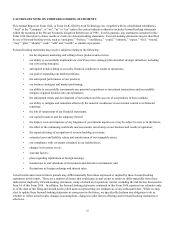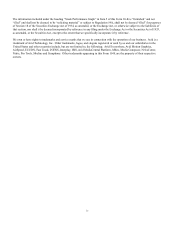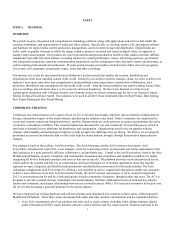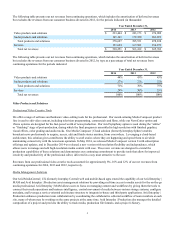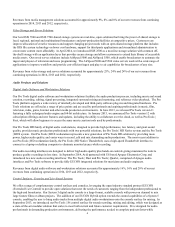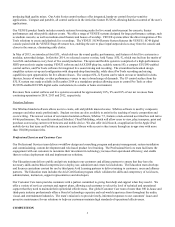Avid 2014 Annual Report Download - page 15
Download and view the complete annual report
Please find page 15 of the 2014 Avid annual report below. You can navigate through the pages in the report by either clicking on the pages listed below, or by using the keyword search tool below to find specific information within the annual report.
9
ITEM 1A. RISK FACTORS
You should carefully consider the risks and uncertainties described below in addition to the other information included or
incorporated by reference in this Form 10-K before making an investment decision regarding our common stock. If any of the
following risks were to actually occur, our business, financial condition or operating results would likely suffer, possibly
materially, the trading price of our common stock could decline, and you could lose part or all of your investment. Additional
risks and uncertainties that we are unaware of, or that we currently believe are not material, may also become important factors
that adversely affect our business.
Risks Related to Our Business and Industry
If we are unable to successfully execute on our strategy, our business, financial condition, and results of operations could
be adversely affected.
We are in the process of transforming our business based on a strategy built on three pillars, Avid Everywhere, The Avid
Advantage and the Avid Customer Association. As part of our corporate strategy we have organized our products in three suites,
all built upon our MediaCentral Platform. The ongoing implementation of some of our strategy may require additional capital that
we may not have access to on reasonable terms or at all. Additionally, our strategy is requiring us to develop expertise in new
areas and establish new competencies either through talent acquisition or internal development, which we may not be able to
successfully achieve. Moreover, the pace and scope of the transformation contemplated in our strategy increases the risk that not
all of our strategic plans will deliver the expected benefits within the anticipated time frames, or at all. Furthermore, as a part of
our strategy we are also identifying and executing on opportunities to reduce operating costs. If we are unable successfully to
execute on our strategy, our business, financial condition, and results of operations could be adversely affected.
We operate in highly competitive markets, and our competitors may be able to draw upon a greater depth and breadth of
resources than those that are available to us.
We operate in highly competitive markets characterized by pressure to innovate, expand feature sets and functionality, accelerate
new product releases and reduce prices. Markets for certain of our products also have limited barriers to entry. There is an
additional risk of consolidation among our competitors, which could result in fewer, more effective competitors. Customers
consider many factors when evaluating our products relative to those of our competitors, including innovation, ease of use, price,
feature sets, functionality, reliability, performance, reputation, and training and support, and we may not compare favorably
against our competitors in all respects. Our restatement process may have had a negative impact on our reputation among our
customers. Some of our current and potential competitors have longer operating histories, greater brand recognition and
substantially greater financial, technical, marketing, distribution and support resources than we do. As a result, they may be able
to deliver greater innovation, respond more quickly to new or emerging technologies and changes in market demand, devote more
resources to the development, marketing and sale of their products, successfully expand into emerging and other international
markets, or price their products more aggressively than we can.
If our competitors are more successful than we are in developing products or in attracting and retaining customers, our financial
condition and operating results could be adversely affected.
The rapid evolution of the media industry is changing our customers’ needs, businesses and revenue models, and if we
cannot anticipate or adapt quickly, our business will be harmed.
The media industry has rapidly and dramatically transformed over the past few years and is continuing to do so as free content,
minimal entry costs for creation and distribution, and the expansion of mobile devices have become prevalent. As a result, our
traditional customers’ needs, businesses and revenue models are changing, often in ways that deviate from our core strengths and
traditional bases. If we cannot anticipate these changes or adapt to them quickly, our business will be harmed. For example, our
customers have to address the increasing digitization of the media industry, which requires the creation of a more seamless value
chain between content creation and monetization. Furthermore, because of the consumerization of the media industry, there is
more pressure to create media that can be repurposed in a variety of ways in an efficient manner. As a result of these industry
changes, traditional advertising channels are also facing competition from web and mobile platforms and diminished revenues
from traditional advertising will cause some customers’ budgets for the purchase of our solutions to decline; this may be
particularly true among local television stations, which in the past have been an important customer industry for us. Additionally,


